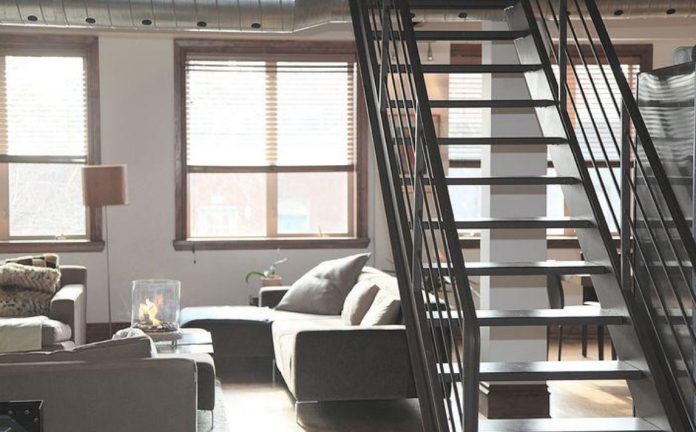In an attempt to increase their living area, people usually move into a bigger house. However, this move could cost several thousand pounds just to increase your living space.
As an alternative, you can simply opt for an attic or loft conversion. Not only will you get more space in your current home, but you will be increasing the value of your home by up to 20%
Most loft conversions in the UK cost anywhere from £20,000 to £45,000. The price depends on several factors, including floor size, conversion type, and level of strengthening of your loft. You could also spend up to £70,000 if your conversion project is large.
Given these costs, you might be wondering how loft conversions are beneficial to householders. For starters, in a growing family, numbers are constantly increasing and so are expenses. Moving into a new apartment just to get more space would significantly increase the amount of money you have to spend. However, converting a loft would reduce the financial burden and provide the required space for living.
We completely understand all there is to know about loft conversions from types to estimates to making the actual conversion. In this article we will teach you about all that we can do for you.
Loft Conversion Cost Estimates
Loft conversion costs vary based on various factors. One of these is the conversion of certain types of houses, such as terraced houses, semi-detached houses, or even detached houses. Besides that, the larger the home, the higher the conversion cost.
Most builders do not include VAT when giving you estimates, so that is what we are going to do as well. Also, keep in mind that the cost of labour varies and areas in London and Southeast England tend to be 20% higher than other places, so ensure to calculate accordingly.
Below you will find a table with an estimated cost of conversion based on the conversion type.
| Type of Loft Conversion | Estimated Cost |
| Simple loft conversion (1 room) | £15,000 to £20,000 |
| Velux loft conversion | £15,000 to £20,000 |
| Dormer loft conversion | £30,000 to £60,000 |
| Hip to gable conversion | £40,000 to £65,000 |
| Mansard loft conversion | £45,000 to £70,000 |
Any loft conversion process must abide by specific rules called the UK Building Regulations. However, the subject is too bulky to talk about in this section. You will read more about it as you go on with the article.
Comparing Quotes Could Save You Upto 33%:
Simple Loft Conversion
This is arguably the easiest and most affordable renovation type. All this conversion entails is simply building a small room underneath the existing roof without affecting the roof itself.
The builder will then add single or multiple skylights to give the room some natural lighting.
Velux Loft Conversion
This is yet another simple loft conversion, but the builder will use Velux windows for ventilation and an emergency exit. These types of windows come in different sizes and styles and possess various functions.
This is why you should choose a window that meets all your needs. Fortunately, manufacturers ensure that the Velux windows they produce comply with the UK Building Regulations. They also ensure that these windows have features to help the builder install them while complying with these regulations.
Dormer Loft Conversion
These types of conversions make use of something called “dormer windows.” Labours install these windows vertically so that the window is seated on a pitched room, thereby creating walls at a 90° angle to the floor. This not only creates headroom but floor space as well.
Hip to Gable Conversion
A hip roof has four slanted surfaces. This type of roofing makes loft or attic conversion tedious because it does not leave enough space for anything else. Furthermore, due to the nature of the roof, there is little to no headroom. Worst of all, the roof cannot support the joists.
Therefore, there needs to be a hip to gable conversion. During this conversion, the builder would remove one or more slanting roof surfaces and extend the wall. After the extension, a gable wall is formed, which should match the height of the ridge.
Due to the nature of this project, the procedure is quite expensive and difficult. This is why a conversion specialist is needed at all stages of the process.
Mansard Loft Conversion
Mansard roofs usually have two altered pitches on the roof slopes. Much like the roof slopes the conversion will also have two pitches. It usually occurs at the back of the property and possesses a flat roof with the front surface sloping inward at a 72° angle.
This type of loft conversion works for all houses, from detached to bungalows. This is why they are the most popular type despite being the most expensive.
Comparing Quotes Could Save You Upto 33%:
Cost Factors
Loft conversion costs are affected by several factors. Some of which include location, size, weather, and so much more.
Location Within the Country
As we mentioned earlier, the location of your home is a factor in deciding how much the labour fee would be. The price in London tends to be about 20% higher than in the rest of the country, so be sure to include that in your calculations.
Also, keep in mind that the distance between your home and where the contractors reside is another factor. After all, they have to journey back and forth every day until the job is done. Therefore, the distance affects the prices.
Lastly, builders need sellers to deliver the items required to make the conversion possible. Hence, you need to include the delivery charges. The price of delivery will vary based on how far the merchant travelled.
Weather
Another factor to consider is the season in which you want to make the conversion. In the process of loft conversion, the builders have to leave the roof open for a few days or even up to a week.
During this period, your home is exposed. This is why most loft conversion projects are carried out during the summer when it’s unlikely to rain and it wouldn’t snow either.
Some contractors take advantage of this and hike labour prices during this period due to the massive influx of orders and work available.
Size of Loft
The bigger the house, the more work there is to be done. Also, more materials are needed. Therefore, the labour price and the cost of buying materials vary depending on how big or small the loft will be.
Style of Conversion
This relates to the size of the loft. If you look back at the loft conversion calculations made in the table above, you will see the prices of different styles.
As we discussed, the more affordable renovation options are fundamental, and the more premium ones are complex and require those with a higher skill set. Therefore, the more complex your loft conversion style is, the pricier the project will become.
Strengthening
Regardless of the loft conversion type, the builder needs to include larger flooring joints. This will help to support the floor. However, some styles require that the builder have RSJs and additional roofing timber. These additions will most likely increase the conversion cost.
Plumbing and Drainage
Some loft renovations will involve showers, toilets, and sometimes, sinks. In cases like these, there must be a provision for cold and hot water supplies. The builder also needs to include a drainage system. The inclusion of these factors will increase the price of the project.
Central Heating
As you are gearing up to add another room to your home, you must remember that the new room requires heating.
Now, the most affordable option would be to utilize individual electrical heaters you connect to the consumer unit. Alternatively, if your own central heating boiler has extra capacity, you can include an additional radiation to your loft. Lastly, you can opt for underfloor heating.
Comparing Quotes Could Save You Upto 33%:
Example Cost Calculator
The cost of loft conversion might seem a little steep. But breaking it down will help put things in perspective with regards to where the money goes precisely.
Let’s take a 30m2 area, for example. The estimate would be about £40,000. Here’s precisely how that amount is likely to be spent:
- The fee for professionals would cost about £9,000. This fee would include project management, planning, and others. Keep in mind that this fee does not cover the cost of materials.
- Renting a scaffold will cost about £4,000. Fortunately, this is a one-time payment, and the fee will cover renting for the project’s duration.
- The site must be prepped before the contractors can start working on it. The cost of this process will be about £1,000. An example of this preparation includes clearing vegetation where the scaffolding will be installed and where the builders will operate. Another example would be the installation of a small shed where workers would store their work tools and materials.
- Regardless of the conversion, the roof structure will always need to be altered. It could be as small as creating space for a Velux window or as complex as alterations for mansard conversion. You will need an estimate of about £5,000.
- As we mentioned earlier, loft conversion processes require RSJs and other materials for support. The price of these materials varies, but it should cost about £4,000.
- Besides roof alterations, the builders will need to install roofing tiles and felt. Installation would cost about £6,000.
- Lighting, of course, is essential in a new room. Yes, the window gives natural lighting, but you need to install powerpoints and lights. You will need about £1000 for this.
- You will also need internal joineries like stud work for doors and door frames. Your budget for this will be about £4,000.
- According to the UK Building Regulations, you need a staircase. The staircase should be about £2,000 to buy and install.
- Builders will need to install plasterboard covering, and after installation, they will need to plaster the surfaces. The process should be about £3,000.
- Lastly, the workers will need to decorate the plastered surfaces, which will be about £1,000.
Comparing Quotes Could Save You Upto 33%:
Planning & Compliance Expenses
A loft conversion is a serious project, and you might need the expertise of professionals such as a structural engineer and architect.
Furthermore, before you can commence with any loft conversions, you must submit your plans to the local authority to get approval.
Here is a breakdown of all the costs for the various fees.
| ITEM | ESTIMATED COST |
| Local Planning (including plans submission) | £172 |
| Building Control | £40 to £800 |
| Architect | £500 to £1500 |
| Surveyor & Structural Engineer | Will be included in the total bill |
| Party Wall Act survey | £200 to £1000 |
| Other: Bat Survey | £300 to £400 |
| Other: Asbestos Survey | £150 to £500 and fee for any corrective work |
Local Planning
In a lot of cases, you won’t need to get planning permission for your loft conversion. However, you need to comply with all conditions.
In England, the cost for this is about £172. However, if you are uncertain, you can contact officers who can give you a better idea of the fees. Fortunately, you can use this free calculator to get an estimate.
Building Control
The price you pay varies based on the conversion style and who does the construction work. You can use a merchant under the Competent Persons Register or a regular contractor.
Merchants under the register are always trusted to do great work without supervision from Building Control. However, their work includes Building Control fees; these fees vary based on size and conversion type.
Architect Costs
Most specialists can handle the conversion project without an official plan, but it is always best to have one.
The architect will charge you based on the amount of work they do and the conversion size. Also, they will have to outsource structural work to qualified individuals. The architect will add the other professionals’ fees to the final bill. You should be looking to spend about £500 and £1500 on this.
Surveyor & Structural engineer
Surveyors will specify the point from which the contractor will make all measurements. This is an integral part of the process because the measurements must comply with permit requirements.
The structural engineer’s job is to make sure the new structure is strong enough to carry heavy loads. Building Control must see the calculations that confirm that the loft is safe. The engineer’s fee is usually added to the architect’s.
Party Wall Act
The Party Wall Act etc. 1996 is for terraced and semi-detached homes whose conversion process affects the wall between their home and their neighbour.
Consultation from a Party Wall surveyor will cost about £200, and if you need them to write up an agreement, you will need to pay about £1000.
Other
Bats are protected by law in the UK. So, if they have a roosting spot in your loft, you need to conduct a survey and write a report applying for a license. Afterwards, the necessary authority will decide if you can move on with loft conversion. The survey should range from £300 to £400.
Comparing Quotes Could Save You Upto 33%:
UK Building Regulations
Regardless of the size or style of your loft, you need to comply with these rules.
Floor Reinforcement
The current joists in your ceiling are not meant to withstand heavy loads. Therefore, you will need to strengthen or replace them.
The structural engineer will specify what alterations or additions need to be made to achieve your required amount of reinforcement. You can find more about this in the Building Regulations (Structural safety).
Insulation Between the Roof Rafters
This is important in complying with the Building Regulations. Currently, the minimum value should be lower or equal to 0.18W/m2. Other conditions depend on your roof type. You can find more on this here and here.
Staircase for Safe and Efficient Access
You have several options to choose from, but they must abide by the conditions under Structural Safety and Fire Safety.
A Heating Installation
The source of the heat does not matter. You can either use the central heating system or install standalone electrical heaters. You can find more of this here.
Electric Power Points and Lighting
The electrical circuits in your loft must have a standalone ring main and a connection to the consumer unit. Also, you will need additional cables for electrical heating. Read more about it here.
Opening Windows
You need ventilation and maybe natural lighting. Read more about this rule here.
Fire Doors and Smoke Alarms
You need to have fire doors and smoke alarms in order to alert home dwellers about fire and prevent the spread of fire. Here’s more about Fire Safety.
Plumbing
A few larger loft conversions come with showers and toilets—more of this under Part G.
Comparing Quotes Could Save You Upto 33%:
Benefits of Converting Your Loft
There are several benefits to loft conversions, and here are some of them.
- Increased living space. You can do a number of different things with this space. It is also more affordable than building an extension and has fewer regulations.
- The value of your home increases.
- Natural lighting in your new room
How Long Does a Loft Conversion Take?
A loft conversion is not an easy process and takes a lot of workforce and time. The duration is also affected by the weather and the availability of different professionals when needed.
If you are fortunate enough to have great weather and all the professionals available, the job should go smoothly and swiftly.
Before Starting the Build
Make sure all documentation has been submitted, and you have all the permission you need. Also, make sure the architect completes the plans and all surveyors complete the necessary surveys.
Week 1
Install scaffolding and covering for the inside of the loft. Also, make sure all materials needed for the job are available. Roofers should take off roof tiles for later use.
Week 2
Change the roof’s structure by adding RSJs and other supports. This is the point where roof lights are installed. If not, erect dormer frames.
Week 3
Complete all outside work and weatherproof the roof. Complete roof installations and complete electrical and plumbing work.
Week 4
Put all the windows in place. Then lay the ceiling and flooring. You should also add ventilation and install dividing studs.
Week 5
Add the staircase and install the toilet and shower. Now, install second fixes of electrical and plumbing work.
Week 6
Round up any incomplete tasks. The builders can remove the scaffold, and then they can beautify the walls and woodwork.
Comparing Quotes Could Save You Upto 33%:
Additional Extras For Your Loft
Here are some extras to add when you are thinking of loft conversion.
Adding a Bathroom
In a loft conversion, you should consider getting a toilet instead of a bath. You can install a toilet, a sink, and a shower. You can even think about building a wet room. A wet room should cost about £3,000 and £8,000
New Staircase Replacement
A standard staircase should cost about £1200, but premium ones go for up to £10,000. The Building Regulations dictate features of the stairs such as riser size, spindles, step size, and handrails. They must be made and designed to abide by these regulations.
Underfloor Heating
Underfloor heating is easier to install while still undergoing loft conversion. It is also advisable to use underfloor heating because it requires less heat to produce a temperature rise and does not take up space. You will need about £300 to £900 for it.
Moving Water Tank
You need to move the water tank before you start work. Alternatively, you can replace the tank with a newer model. Moving will cost about £100 to £200, while upgrading may reach up to £600.
Asbestos Removal
Houses built before the 90s have asbestos in them. If you believe your home was built during this period, you should pay for an asbestos survey to confirm if there is any. It is best to do this because you are legally required to remove asbestos. The cost of the survey ranges between £150 and £500. However, you should store extra money in case you need to remove asbestos.
Truss Style Roofs
Roofs are manufactured using rafters or trusses. If your roof was made using trusses, it would be harder to make the loft conversion. However, it is not impossible. Simply employ a structural engineer to calculate how much it would take to alter them to give you enough room. They will charge about £500 to £1,000. Also, strengthening the roof will be pretty pricey.
Comparing Quotes Could Save You Upto 33%:
Loft Conversion Ideas
You can use a loft conversion for many things. Here are a few things you can use it for.
Bedroom for children: If you are expanding your family and need more rooms for your children, why not convert your attic to bedrooms for them. This way, each child gets their own space.
Master bedroom with a shower and toilet: With a master bedroom that comes with a shower and bathroom, you are creating an extra room for yourself, a guest, or you could even rent it out.
Playroom: Need some time away from your kids so that you can focus on yourself? Then, converting your loft into a playroom is a fantastic idea. You get time away from them, but you are still close enough to them if they need you.
Office: Maybe you tend to work from home and need to create an office space. With this space in your house, you can do just that. You can spend all the time you need working upstairs, and when you need to unwind, you simply need to go downstairs.
Comparing Quotes Could Save You Upto 33%:
FAQs About Loft Conversion
Which is more affordable? A loft conversion or an extension?
A loft conversion is cheaper and easier because it does not take as long. Furthermore, fewer regulations govern a loft conversion as opposed to an extension.
Can neighbours stop the loft conversion process?
In most cases, neighbours do not have a say in your loft conversion. As long as you comply with all regulations, you should be fine. The most they can do is delay you. However, keeping a good relationship and updating them as you go on with the project is best. This is to ensure everything runs smoothly.
Is a DIY loft conversion possible?
Truthfully it isn’t. This project has too many moving parts for you to do it yourself. You will need a lot of knowledge on roofs, structural integrity plumbing, electrical fixtures, and much more. This is why it is best for you to leave it to the professionals.
Find Local Loft Conversion Builders
A loft conversion is one of the easiest and most affordable ways to increase the space in your house. If done correctly, you can increase the value of your property.
However, we don’t advise that you turn this into a DIY project. This kind of work requires the knowledge of several professionals, and you should ensure you meet professional contractors to help you. Using our platform is one of the best ways to find specialists near you.
You can fill out the form on your page, and we will supply you with some quotes for the completion of the project. Rest assured, we offer some of the best prices on the market with the most qualified specialists.
Comparing Quotes Could Save You Upto 33%:
Disclaimer: This article contains sponsored marketing content. It is intended for promotional purposes and should not be considered as an endorsement or recommendation by our website. Readers are encouraged to conduct their own research and exercise their own judgment before making any decisions based on the information provided in this article.



































